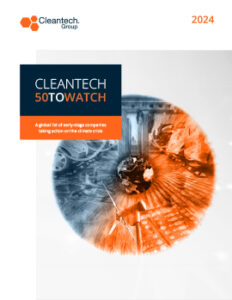C-Suite, Start-ups and Suits – The Changing Face of Corporate Sustainability
Corporate sustainability continues to move out of the ‘nice-to-have’ and ‘good publicity’ categories and into a corporate’s core strategy, although this is still the exception rather than the rule for most companies. When attending The Economist’s Sustainability Week: Countdown to COP28 event in London in October, it became very clear this is shifting. With the sticks of compliance and litigation risks, along with the carrot of innovation, corporate sustainability is changing.
Here are my takeaways and thoughts:
Sustainability in the C-Suite
The increasing prominence of the Chief Sustainability Office (CSO) in large corporations demonstrates how mainstream corporate sustainability is becoming. The Economist hosted two in-person sessions on the CSO function, where panelists outlined their most impactful roles including:
- Educating the company on how sustainability impacts them
- Facilitating and empowering internal teams to lead on sustainability
- Engaging in strategic investment
The CSO role is still nascent and therefore is not always as impactful as it can be, but some green flags surrounding the CSO role include:
- Clear, detailed, and data-embedded sustainability goals from the company
- Access to the CEO and board, so sustainability becomes part of the corporate strategy
- Ability to delegate to other teams so sustainability doesn’t exist in a silo
- Strong partnership with the CFO, aligning sustainability with financial growth
This final point leads us to our next ‘S’ in the title – Start-ups. Engaging in innovation and start-ups was a recurring topic when discussing the role of CSOs.
Start-ups and Innovation – The Double Win
Investing in innovative solutions presents a double win for corporates — improved efficiency and competitive advantage. The CSOs which spoke at Sustainability Week: Countdown to COP28 all agreed in the power of innovation for advancing their company’s sustainability goals. This is an area where Cleantech Group has decades of experience.
Today, Corporates are benefitting from innovation in the following ways:
- Improving Internal Practices. By procuring advanced technologies, companies can improve the efficiency of their practices, e.g., recycling can convert a business cost (waste disposal) into a new revenue stream (waste-to-energy plant).
- Reporting and Monitoring. Reporting and monitoring software helps Corporates measure, make, and monitor climate goals and climate risks, enabling data-informed action and resilience.
The above points are the low hanging fruit of innovation. Truly innovative companies first look at their unmet sustainability needs, which usually exist at many levels of their business, e.g., Swire Pacific’s Sustainable Development (SD) Fund seeks primarily to fund proof-of-concept pilots of innovative technologies that have the potential to significantly and positively impact environmental performance of operating companies within Swire Pacific’s portfolio.
Looking outside the organization for innovative solutions requires a shift in corporate thinking – avoiding the “not made here” syndrome, and the “we can’t depend on a small start-up to meet our big needs” belief. Engaging innovators through pilots, joint development, partnerships, or direct investment allows an organization to become familiar and comfortable engaging innovative start-ups that may be critical to the success of their company.
While the sustainability team is engaging the ecosystem looking for innovators, they should also be thinking beyond unmet sustainability needs, with more forward thinking.
- Look for solutions that reduce risk and increase resilience due to the changing climate, e.g., Diageo Sustainable Solutions 2022 program sought to find innovators providing regenerative agriculture solutions across carbon, moisture, and biodiversity to strengthen its agricultural value chain and mitigate climate risks.
- Consider potential new business / growth opportunities, e.g., speciality chemical provider and catalytic converter manufacturer, Johnson Matthey, expanded into green hydrogen production with a 2022 partnership with Enapter, an innovator in hydrogen electrolyzers.
Sustainability officers are in position to utilize their teams, process and frameworks effectively, collaborating with other key parts of the organization – including supply chain, procurement, risk management, business development, strategy, as well as the business units with unmet sustainability needs.
Litigation Risks
What usually comes to mind when reading about climate risk is physical risk – fire, flood, drought are the markers of the dystopian future we’re trying to avoid – not lawyers. Yet at The Economist event, I spoke to many lawyers who corroborated my assumptions of their presence — litigation risks are increasing, and the law profession is responding.
As of December 31, 2022, the UN reported that an excess of 2,180 climate lawsuits had been filed in more than 65 jurisdictions across the world. These lawsuits are still in their nascency, but they are increasing in incidence and success for the plaintiff.
Oncoming and existing mandatory disclosure regulations, including the European Commission’s European Financial Reporting Advisory Group (EFRAG) and the U.S. SEC and mandatory emissions disclosures, are coming into effect. Companies will seek legal guidance to ensure compliance – thus, creating opportunities for the legal profession.
With increased data on corporate impact from mandatory disclosures, one can expect a stronger finger to be pointed at corporate emissions from their customers, investors, and the public – and so litigation risks will increase further.
To avoid hypocrisy, law firms want to first navigate emissions disclosures themselves before helping clients. However, frameworks don’t exist for law firms to report their own emissions – since most of their work and impact is advice. One developing framework is to calculate ‘advised emissions’ also referred to as ‘Scope 4’ emissions.
The Law Society defines advised emissions as, “emissions associated with matters on which solicitors advise, as a proxy for understanding whether these are reducing, alongside those of your clients, in line with the IPCC recommendations.” I did meet a few law firms who were leading in creating this framework. However, this development is in nascency and advised emissions are not included in the GHG Protocol. Therefore, if accepted, it will take a long time to ratify advised emissions into mandatory disclosures, so will likely be voluntary for the foreseeable future.
Finally, Sustainability Week: Countdown to COP28 was a great litmus test to the status of corporate responsibility in the UK and Europe, which I would summarize as professionalizing and innovating but still moving too slow!
I look forward to hearing the advances in these areas at the 9th annual Sustainability Week on March 4th-6th in London.



